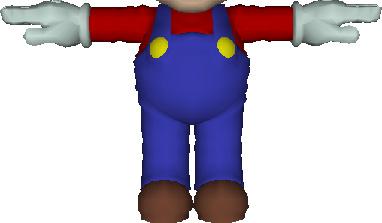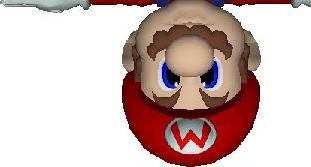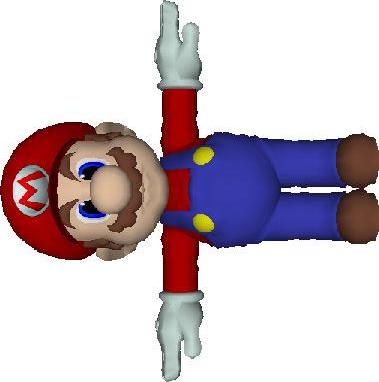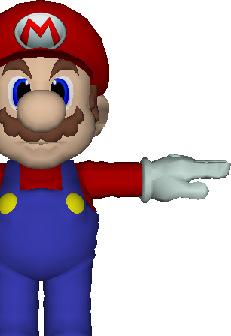
6 minute read
Mario 128: The Unfinished Game You've Probably
from TN2 Issue 4 20/21
by Tn2 Magazine


Advertisement

Mario 128 Mario 128 The Unfinished Game You’ve The Unfinished Game You’ve Probably Played Probably Played
WORDS BY ROBERT GIBBONS
The year is 1996. Nintendo is hot off the launch of the Nintendo 64 and the groundbreaking, genre defining game: Super Mario 64. It was the darling of every critic and consumer. Wanting to strike while the iron is hot, work began in the back rooms of Nintendo on its successor: Mario 128. A game that held so much promise, yet never came to pass. A game whose development characterised the next decade of Nintendo games, yet is erased from the annals of their history. A game that doesn’t exist, yet one that you’ve likely already played.

Mario 128 began with a few simple ideas that had been scrapped from Super Mario 64: Luigi as a co-op character and a rideable Yoshi being chief among them. With these, Shigeru Miyamoto began work on the last game he would ever direct. The Nintendo Entertainment Analysis and Development Division (Nintendo EAD) began work on several prototypes to see how these ideas could play out. Through this process, what began as a simple Super Mario 64 sequel, began to grow. Firstly, Luigi stopped being an optional character for co-op, but instead became someone the player would control simultaneously with Mario. Secondly, Miyamoto, following the release of Super Mario 64, grew increasingly frustrated with Mario’s popularity as a children’s character. So, in a 2002 interview with Playboy Weekly Japan (yes, that Playboy), he promised that Mario 128 would have more mature graphics and themes. Thirdly, they wanted to include a new type of enemy AI that would react in more varied ways to Mario’s attacks. Finally, Miyamoto wanted a more complicated way of platforming that would see Mario traversing spherical stages.

The production process dragged on with countless delays. It was first delayed by the release of Ocarina of Time, which was intended to be an N64 launch title, but was delayed by almost a year. Nintendo was unwilling to devote the staff necessary for Mario 128until production was completed on Zelda. It was then delayed further by Miyamoto’s own schedule, since he insisted on directing Mario 128, despite supervising countless other games simultaneously. Even when Nintendo EAD had prototypes ready, Miyamoto didn’t have the time to play them. In 1999, he told Nintendo Power that he had a prototype for Mario 128 that had been sitting on his desk for over a year, but he hadn’t had the time to play it yet. What these delays meant in concrete terms was that the goalposts kept shifting on where Mario 128 would end up. It began as an N64 game, then it became a game for the 64DD (a failed disk drive peripheral for the N64 that only saw release in Japan) and then it became a Gamecube title.

This brings us to Nintendo SpaceWorld 2000. The SpaceWorld showcase was an annual trade show that Nintendo hosted from 1989 to 2001 which Wikipedia describes as “three days of high-energy party atmosphere”. Existing before widespread international video game journalism, it has become a treasure trove of video game legend and hearsay. From SpaceWorld 2000, however, we have footage from the crowd as Nintendo shows the only public demo of Mario 128 A blank screen with the words Mario 128.


An 8-bit Mario runs across the screen, pausing at the centre, before it zooms out to reveal that this Mario is made of a collection of cubes on a circular board game board. 3D Marios begin to come from beneath the blocks, dismantling their 8-bit counterpart. A number on the top of the screen keeps track of how many Marios there are, counting upwards to 128. 128 Marios run around the board chaotically. Suddenly, the board starts to morph at random, throwing Marios off as more fall from the sky. Suddenly the board becomes a pizza. The pizza tosses off the Marios that remain. The pizza then goes into the disk drive of a Gamecube and that’s it. This is the only footage we have of Mario 128.
This demo was designed by Yoshiaki Koizumi - the Assistant Director of Super Mario 64. From here, Nintendo’s work focused on two different prototypes: The Mario 128 Project (a sequel to Mario 64) and The 100 Marios Project (a full-game version of the SpaceWorld prototype). The next six years saw Miyamoto constantly confirming that Mario 128 was coming. Super Mario Sunshine was confirmed to be an unrelated project, despite being directed by Koizumi. Miyamoto expressed that he was hesitant about public displays because the technology was so utterly revolutionary that it would be stolen by other developers. Miyamoto said it would be present at E3 2004. Nintendo of America President Reggie Fils-Amié was insistent that it would have a showing at E3 2005. In 2005, Miyamoto took a leave of indefinite duration from the project handing the reins to Koizumi and the Sunshine development team. After three months of work, Miyamoto gave Koizumi his blessing to begin work on Super Mario Galaxy.
On March 8th 2007, Shigeru Miyamoto gave the keynote address at the Annual Game Developers Conference where he said this: “The one question I’m always asked is, ‘What happened to Mario 128?’... I’m always at a loss as to how to answer it, because most of you have already played it - but you played it in a game called Pikmin.” Nintendo have since come out and said that the SpaceWorld Prototype was just a tech demo to display that the Gamecube could have 128 3D Marios simultaneously. Many people accept this as the epitaph of Mario 128. It was a tech demo that was overhyped by overzealous fans. This, however, ignores the more complex reality.
Mario 128 was never a game, it was a decade’s worth of games. The 100 Marios Project became Pikmin, with a hoard of characters acting as both individuals and a group. Controlling two characters simultaneously, though originally envisioned for Mario and Luigi, was realised in Pikmin 2. Yoshi became a rideable character in Super Mario Sunshine and returned as one in Super Mario Galaxy 2. The more mature graphics and themes are visible in Majora’s Mask, Twilight Princess, and the Metroid Prime trilogy. The physics engine developed through those prototypes was utilised in Metroid Prime. The sphere walking technology was first trialled in a dungeon in Twilight Princess and fully realised in Super Mario Galaxy. If I were to put on my conspiracy theorist hat for a second, I would say that the lull that came from Nintendo in the early 2010s - their “WiiU Dark Age” - was because the Mario 128 well had run dry and it was time to start from scratch again.
For me, the story of Mario 128 is an ode to the creative process. It is a game that Miyamoto held onto so tightly for so long. In 2004, he stated that if Mario 128 didn’t appear at E3 2005, he would consider himself a failure and it’s easy to see this project in those terms; after 9 years of pushing, he gave up and the project fizzled out. What began as a swansong to the character he created in an office cubicle in 1981, ended as something so ambitious that it defined Nintendo for the next decade and beyond. Like so many creative endeavours, the thing Miyamoto set out to create grew and transformed until it became unrecognisable. Mario 128 is not a game, but instead a story about how every success is built on the bedrock of failure.










